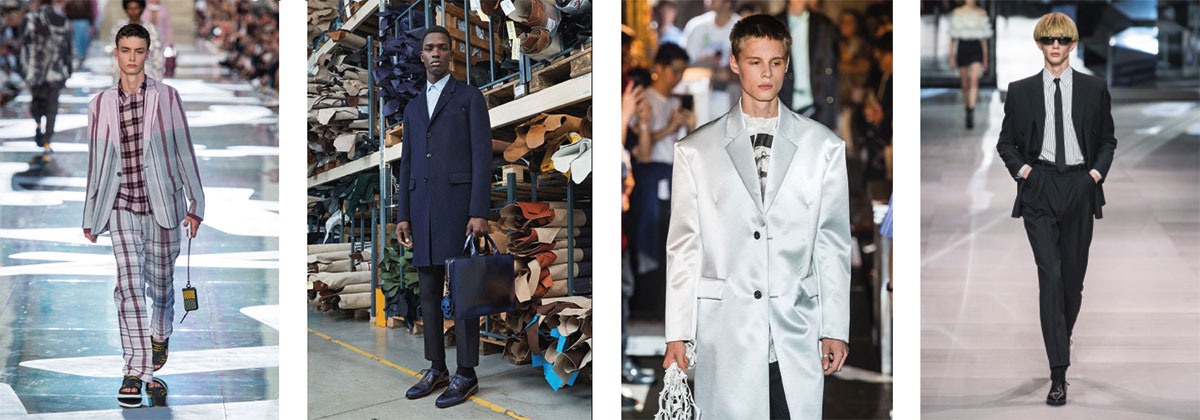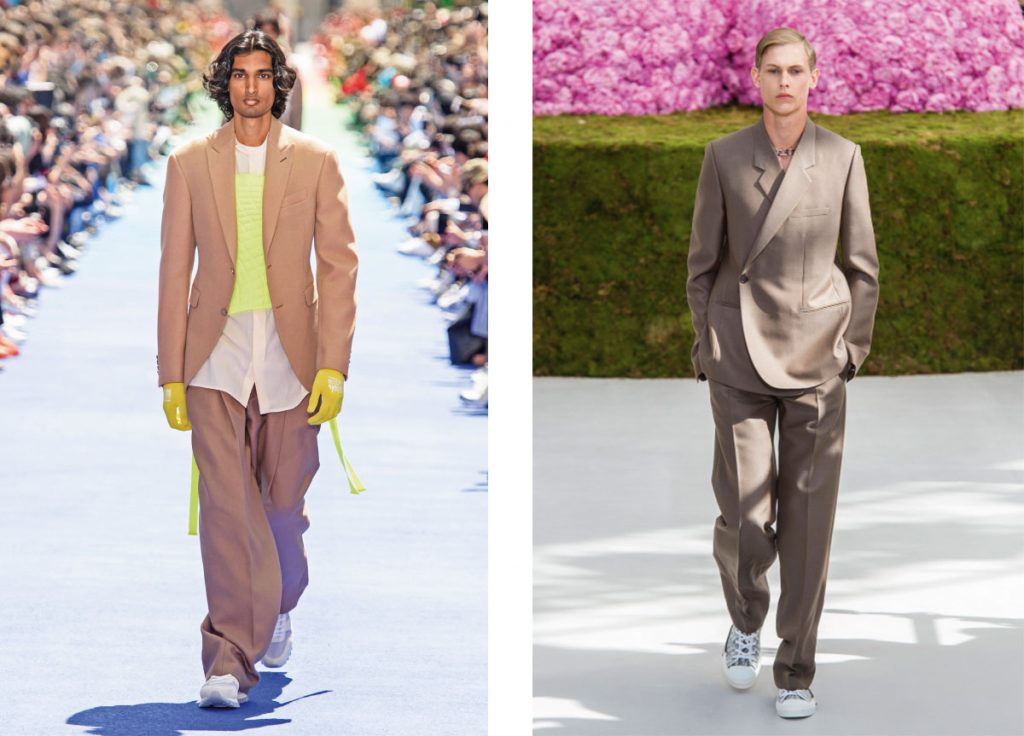Men’s dress relaxes its traditional resistance to change, opening up to every possible interpretation of the masculine, from bespoke tailoring to dress-down street, and defining a new language more in step with the times.
For the longest time, men’s dress has been viewed as a balance of conventions forever associated with resistance to change. This having been said, over recent years we’ve seen a constellation of proposals exploring all those different male identities which, precisely of fashion, demand responses that second the desires of the new man. But we’d be wrong put this down simply to the much-vaunted flexibility of the masculine ideal we see in the pages of so many magazines.
A better idea, perhaps, would be to try and imagine a map structured by quality of content and form. Bear in mind that part of the radical changes that have affected men’s fashion in recent years are also the product of renewed interest in social questions and analyses, and the way they’ve contributed to dismantling prejudices and redefining the ‘branding’ that marks the biological, cultural and linguistic differences now in continual discussion.
We talk of recent years, but this poetic, apart from making men’s fashion far more interesting and innovative than women’s, has been developing since the ‘nineties. With Gucci, Tom Ford outlined a couple in which masculine and feminine affirm themselves on the common ground of explicit and equal sexuality, a perfect image of itself that everyone aspires to achieve. And Raf Simons, since the launch of his brand in 1995, has been revolutionising fashion as a form of elegance free of superstructures and excesses, in a reflection on subculture and the middle ground we call adolescence, beyond the limits of masculinity, updating old references with a versatile range of styles, forms and symbols.
 From left: Ermenegildo Zegna – designed by Alessandro Sartori / Berluti – designed by Kris Van Assches / Raf Simons / Celine – designed by Hedi Slimane
From left: Ermenegildo Zegna – designed by Alessandro Sartori / Berluti – designed by Kris Van Assches / Raf Simons / Celine – designed by Hedi Slimane
Hedi Slimane, a passionate photographer, is instead initiator of a new look destined to change the way men dress, banking on a lean ultraslim physique where aggressive elegance transforms bodies into something from Paris by Night. A revamp of the Parisian style party concept in slim suits and leather jackets, all declined in dark tones with some sparkling accents. But fashion’s most recent selfie comes from Alessandro Michele, in his reinterpretation of Gucci. At his first show in Milan, he definitively buried the surpassed stereotypes of the businessman and super-macho in a perfect crasis of baroque and punk, renaissance, chaos and vintage projected into the future.
Around these trailblazers there are designers like Kris Van Assche, highly appreciated by the male public of the world for his skill in mixing streetwear and Heritage tailoring with a touch of glamour, and Alessandro Sartori, creative helmsman for Ermenegildo Zegna whose work has always been based on the material, fabric, leather or whatever it may be, and takes shape along clean lines, weightless volumes and extraordinary artisan ability.
All-in-all, what we have today is a highly unstable scene, pressured from all sides. The streetwear look and feel has entered the collective imagination of the new generation through music and sports superstars, as well as creative directors like Virgil Abloh, soul of Off White and head of Louis Vuitton, or Kim Jones who’s taken the reigns of Dior and brought back the direct, courageous elegance of Christian Dior. Reinterpretations that are seriously updating the way an awful lot of people dress.


 Left: Tom Ford / Right: Gucci – designed by Alessandro Michele
Left: Tom Ford / Right: Gucci – designed by Alessandro Michele